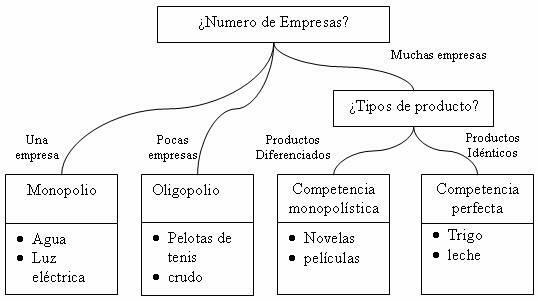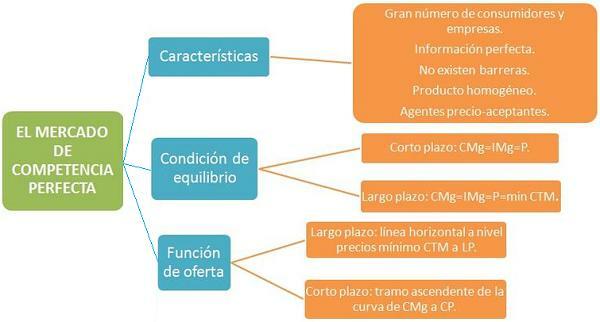Different types of market competition

The economy It is a very complex science due to the large number of factors that influence it and that, therefore, end up influencing us. The economy always looks for the best possible model, trying to find the most perfect market, thereby analyzing the different market competencies. To understand all this, in this lesson from a TEACHER we are going to talk about different types of market competition.
Competition refers to the existence of companies or people that sell products to a series of consumers, who buy the products depending on their needs and tastes. Except for imperfect markets, it is possible to speak of the existence of a large number of sellers and from a large number of consumers.
In a competition, entrepreneurs are free to offer as many legal goods and services as they want and can and consumers are free to choose that product that meets your needs, within your economic capabilities. In competition, the government does not intervene in the actions of companies, there being a free competition, so everything is modified by a series of economic theories.
Competition may be primarily from two types: perfect competition and imperfect competition:
- The perfect one is what happens when the intentions of the market competition are fulfilled
- While the imperfect happens when a series of factors break individual freedom in a market.
Within both competencies, numerous subtypes can arise, as we will see in later sections.

Image: finanzzas.com
To continue with this lesson on the different types of market competition we must talk about the two types, and the divisions that exist. Let's first talk about the perfect competition.
Perfect competition is a market in which companies have no power to change the price at will, being the law of supply and demand that gives value to the products. For there to be perfect competition, there must be a large number of sellers and consumers, in order to that there is a wide variety of choice possibilities and no one can influence the price in any way total.
For there to be perfect competition, a set of conditions vital, some of which are as follows:
- Existence of many producers and consumers.
- Companies must sell a similar product, with very few differences.
- Market transparency.
- The market should not have entry or exit barriers.

Image: Financial Encyclopedia
When the conditions mentioned in perfect competition do not happen, it creates a failure in the market, causing the appearance of imperfect competition. In these cases there is no law of supply and demand, so the prices are freely modified by the economic agents that have the influence.
There can be many different imperfect competencies, depending on different factors. Some types of imperfect competition are as follows:
Monopoly
The monopolyit is the best known of all types of imperfect competition. In this case, the product is only sold by one producer, so the producer has full control over the product. market and you can modify prices however you want, without being influenced by the law of supply and demand. A monopoly possibility is that the company owns the full patent for a product, and therefore no one else can produce that product.
In some cases there are a series of state monopolies, sectors in which the government has total control, and transfers them to a single company for their management, existing a monopoly defended by the Condition.
Oligopoly
In the oligopolythe product is sold by a small group of vendors, who at times have agreed to reduce the competition that arises, creating barriers to entry In this type of competition, prices do not usually follow the law of supply and demand, causing high costs for consumers.
Monopsony
It is a type of market in which there is only one buyer, so the price of the product is chosen by the plaintiff, since it has a greater influence than the producers.
Oligopsony
It is a type of market in which there are only a few buyers, so they have the power over the cost, and can change the amount of products that are produced.

Image: Economy



